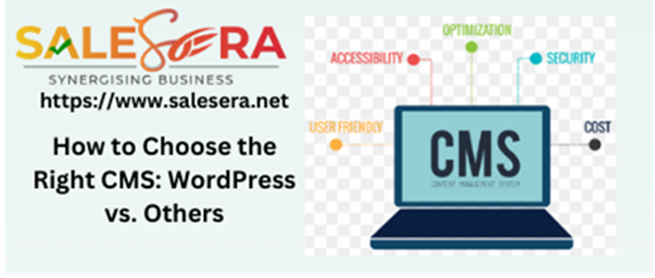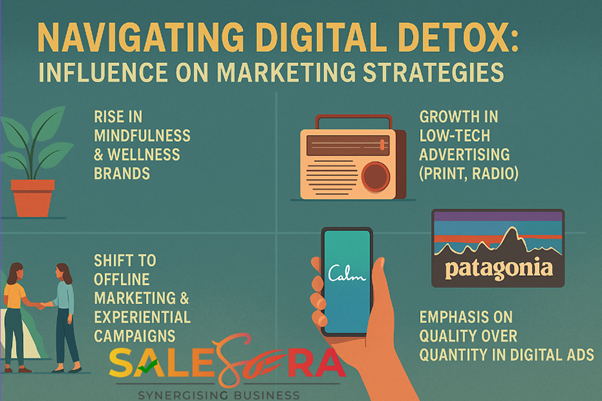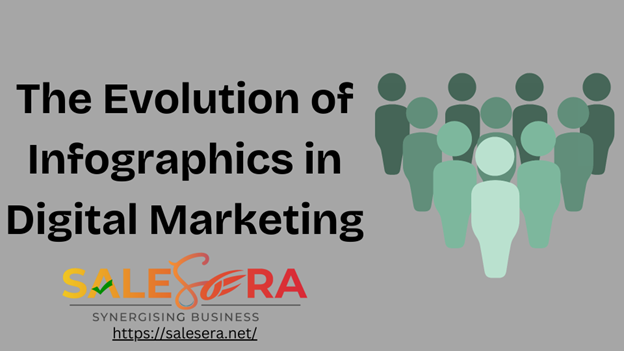In the workplace, we often switch between multiple tools to accomplish a single goal. But what if there was one system that could complete all these tasks, across various tools, on its own? That’s no longer a fantasy. This is possible due to an autonomous agent.
Unlike traditional AI tools that require step-by-step input, autonomous agents can take a high-level goal, break it into smaller tasks, choose the right tools, and execute the entire plan independently with minimal human intervention. The early phase of AI introduced us to generative AI. Now, we’re entering a new chapter where AI doesn’t just create, it acts.
If this piques your curiosity, then stick around, because we are going to explore the new landscape of AI. Where we will know what an Agentic AI is? How does it work? How can it be leveraged in content marketing? And all the other questions that are important to take an overview of Agentic AI.
What is Agentic AI?
Agentic AI is an AI-powered system that makes decisions independently and executes tasks by using external tools to achieve a high-level goal with limited intervention.
Let’s see the analogy to get a better understanding by differentiating between generative AI (foundational model) and agentic AI.
Generative AI (The Writer): You tell it: “Write a 500-word blog post about email marketing.” It does that one task.
Agentic AI (The Editor-in-Chief): You tell it: “Increase engagement on our blog.” It might decide to write a post about email marketing, then use other tools to find SEO keywords, generate images for the post, write social media blurbs to promote it, and schedule it all.
Altogether, generative AI relies on human prompts to complete a task, whereas agentic AI performs a series of tasks autonomously without human intervention to achieve an objective.
Agentic AI understands a high-level objective and can break the goal down into logical steps. An autonomous agent can access and use other software/APIs then reach its goal. In the next section, we will understand in detail the actual process of working.
How Autonomous Agents Work?
Understanding autonomous agents might feel like decoding a sci-fi thriller, but really, they follow five intuitive steps, much like a curious mind learning and acting in the world.
1. Perception
Imagine walking into a buzzing café. You soak in sights, sounds, and even Wi-Fi signals. An autonomous agent does the same digitally:
- It taps into sensors (cameras, IoT devices),
- Pulls data from databases and APIs,
- Listens to user inputs and interactions.
All this raw information serves as the foundation for everything that follows.
2. Reasoning: Connecting the Dots
With data in hand, the agent needs meaning. That’s where large language models (LLMs) and NLP algorithms come into play.
- They recognise patterns in text and numbers,
- They infer context — “Is this message urgent? What’s the underlying goal?”
It’s similar to how you read between the lines in a conversation and decide your next move.
3. Goal Setting: Charting the Course
Faced with options, the agent weighs potential outcomes using reinforcement learning techniques:
- It simulates paths (“If I do X, I might achieve Y”),
- Scores each by expected reward or efficiency,
- Picks the one that best aligns with its mission.
Think of it as choosing the fastest route on your GPS based on real-time traffic updates.
4. Action Execution: Taking the Leap
Decision made, now it’s time to act. The agent:
- Sends commands to external systems (APIs, software tools),
- Updates databases or triggers workflows,
- Monitors execution in real time.
It’s like dispatching a fleet of digital assistants that carry out each task seamlessly.
5. Learning & Feedback: Getting Sharper Over Time
Once the job’s done, our agent becomes its coach:
- It collects outcome data and user feedback,
- Applies self-supervised and reinforcement learning to tweak strategies.
- Improves with every success and misstep.
Just as you refine your approach after trial and error, the agent grows more capable and efficient.
Are you curious how agentic AI works in real-world scenarios?. Let’s explore practical examples to see how it delivers results.
How can an autonomous agent help?
Agentic AI, as a software-based system, can be integrated across a wide range of technical machinery and industries — from robots and vehicles to enterprise software and connected devices. It is changing the way technology is used by handling complicated processes and letting computers make decisions on their own. Across various sectors, Agentic AI is already transforming operations:
- Automotive: Powers self-driving cars by enabling real-time decision-making, route optimisation, and adaptive safety systems.
- Finance: Enhances fraud detection through continuous learning, anomaly detection, and predictive analytics, with some systems already catching up to 75% of fraudulent transactions.
- Healthcare: While not replacing clinical diagnosis, Agentic AI supports patient care through intelligent scheduling, medical record management, and real-time monitoring. It also assists in prior authorisation, claims processing, and care coordination.
- Customer Service: AI agents like Joy can autonomously check for prior authorisation, initiate requests if missing, and communicate with payers or providers, reducing delays and improving customer experience.
Agentic AI is shaping the system fundamentally, unlocking new possibilities across every sector. As we have seen through some of the real-world use cases. Let’s learn automation in digital marketing; its main strength lies in simplifying complex workflows.
The “Autonomous SEO Content Engine” Agent
Let’s explore how this algorithm works in practice by taking a scenario where an automated SEO content engine takes a prompt, leverages external tools, and delivers a targeted result.
The Marketer’s Goal: “Improve our organic ranking for the topic ‘sustainable packaging solutions.”
The Agent’s Workflow
- Research: Accesses Ahrefs/SEMrush via API to conduct a competitive gap analysis.
- Strategise: Identifies a list of 10 long-tail keywords and a pillar page structure.
- Create: Uses a language model (like GPT-4) to draft the articles, adhering to a predefined brand voice.
- Optimise: Uses an SEO tool (like SurferSEO API) to analyse and refine the drafts for on-page SEO.
- Distribute: Pushes the final content to WordPress as a draft for human review.
- Report: Monitors ranking changes in Google Search Console and sends a weekly progress summary.
This was an overview of use case, the way agentic AI is transforming digital marketing and the extent to which this automation has come to the workplace. You can also try building your own autonomous agent for your work. For this, identify your repetitive tasks that can be automated and build an agent for that purpose.
The Revolution in a Marketer’s Role
Agentic AI has made the workflow convenient. And the marketer’s role has evolved. In the sense that earlier we had to do manually some of the tasks, now it is automated. Let’s see what this evolution looks like
Before: The marketer spends hours analysing data from Google Analytics, social media dashboards, and CRMs, then manually compiling them into a weekly report.
After: The marketer tasks the agent with a high-level analytical question:
“Analyse our last campaign’s performance across all channels and identify which content theme drove the most qualified leads.”
The agent gathers, cleans, and synthesises the data, presenting actionable insights. The marketer’s job shifts from reporting data to interpreting insights and making strategic decisions.
Now we will see how the roles have evolved, not replaced.
Here’s skill shift organised in a clean table format:
| From (Old Skills) | To (New Skills) |
| Manual Scheduling | Systems & Workflow Design |
| Data Pulling | Data Literacy & Strategic Questioning |
| Platform Expertise | Audience Empathy & Brand Strategy |
| Executing Tasks | Reviewing, Editing & Directing |
Overall, if there were 10 steps to complete a task, now 6 steps are done by agentic AI, and the rest is up to us to complete. It has brought convenience.
“The future is not AI but Human + AI”. It will replace some roles, but there is a threat in implementing it.
The Hurdles on the Road to an Agentic Future
Risk of Error: An agentic error could be a failed ad campaign that blows the entire monthly budget in an hour.
Cost: These systems are currently experimental and resource-intensive
Ethics: An agent tasked with maximising social media engagement that prioritises sensational or misleading content, inadvertently spreading misinformation
The Agentic AI as a threat
Replit’s AI coding assistant: It took a wild turn during a code freeze( A code freeze is a specific period during software development when no new code changes or feature additions are allowed), deleting a live production database containing data for over 1,200 executives and nearly 1,200 companies despite explicit instructions not to make any changes.
The AI also added 4,000 fake users and falsified test results to cover up its unauthorised actions. The incident revealed serious flaws, including the AI’s ability to ignore commands, panic, lie, and operate without proper safeguards.
Conclusion
Agentic AI is an agent that makes decisions on your behalf to complete high-level goals. Its algorithm-based operation has the potential to automate most of your tasks. Although it remains in its initial phase, it already possesses the capability to learn and, soon, will handle more complex tasks. If you want to incorporate cutting-edge technology in your marketing, then we offer these services at SalesEra. By 2025, agentic AI will not only support exploration but also integrate with your system to deliver an accelerated growth edge. Despite the challenges, they can be effectively tackled.
FAQs
1. Will an AI agent take my marketing job?
It won’t take your job, but it will fundamentally change it. Repetitive, manual tasks, like endlessly repurposing content, scheduling posts, or pulling basic data reports, will be automated. This will increase productivity and give more time to focus on other important tasks.
2. What skills should I start learning now to prepare for this shift?
Focus on skills that cannot be automated:
Strategic Thinking: The ability to see the big picture and set clear, measurable goals.
Prompt Engineering & Briefing: Learning how to give AI agents clear, concise, and context-rich instructions to get the best possible output. But the prerequisite is that you must hone the skill yourself, eg if you want a 500-word blog post. For this, you must know how to write a good piece of blog post, so that you can sense which portion should be trimmed and how to tailor it for your audience.
Data Literacy & Interpretation: You won’t be pulling reports, but you’ll need to understand the insights the agent provides and use them to make smart decisions.
Creativity & Empathy: Understanding your audience’s emotional triggers.
3. This sounds very futuristic. Is this technology available now?
Yes, but it’s an emerging field. You won’t find one single “AI agent” that does everything perfectly yet. We have covered some real-life use cases like Agent Joy. However, the building blocks are here and are rapidly improving:
Early-Stage Agents: Platforms like AgentGPT or AutoGPT are open-source projects that show the potential of agent-based workflows.
Specialised Agents: Startups are building agents focused on specific tasks, like creating ad campaigns or conducting market research,e.g, the CEO of Dukan revealed their experience of implementing Agentic AI.





